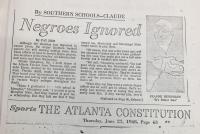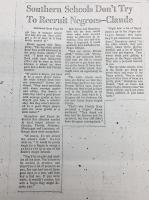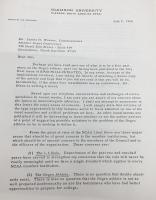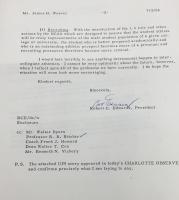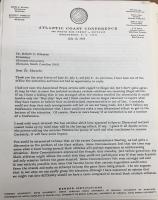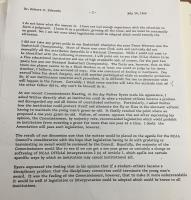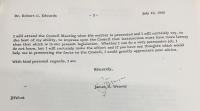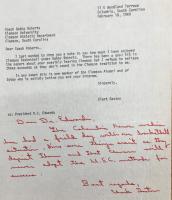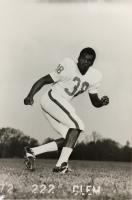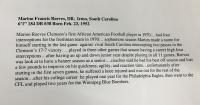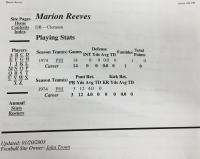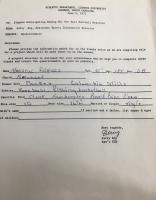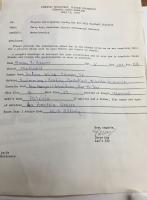Desegregating Clemson Athletics, 1968–
After the admission of Clemson's first African American student, Harvey Gantt, President Edwards began to advocate for more and more African American students to enroll at Clemson University, and especially for their participation in cocurricular and extracurricular activities. However, it was not until five years after Gantt's admission that Clemson admitted it's first African American athlete.
In 1968, Craig Mobley made the basketball team and became Clemson's first African American student athlete. There is very little archival evidence which directly portrays the University and the community's reception of Mobley or his time at Clemson in general. The summer before Mobley arrived at the University, the Newspaper The Atlanta Constitution printed an article relating to African American student athletes, which featured the account of an African American college-aged football player who said that Southern schools purposely ignored Black student athletes in order to preserve their standing in their leagues. In the circumstance of this student, Claude Humphrey, he had been accepted at Memphis State and was offered a scholarship, but was later told that if they signed him onto the football team, other Southern schools like Mississippi State might refuse to play against them. While this article is not directly related to Craig Mobley or to Clemson, it appears that this article, as well as another published in Sports Illustrated, which was mentioned in a letter by President Edwards to the Commissioner of the Atlantic Coast Conference James Weaver, may have spurred Edwards and Clemson's athletics department to actually make an effort to sign a Black student athlete.
Shortly after the signing of Craig Mobley to the Clemson basketball team, however, a Clemson alum, W.P. "Bill" Dobson, sent a letter to President Edwards complaining about the basketball coach's ability to recruit. There is no direct mention of Mobley an none of the words clearly point to the issue of race, but as this letter was written early into Mobley's first season, one can only assume this letter was this particular alum's response to seeing an African American player on the court.
This, however, seems to be the only letter of its sort. The rest of the correspondence about the basketball team from this time appear to be more preoccupied with the rumors that Coach Bobby Roberts was leaving (which did not seem to be unfounded, since Roberts left a year later), the construction of the new Littlejohn Coliseum, and the tension relating to the televisation of sporting events. Fans seemed more concerned about who was coaching the team or that putting the games on TV would take away from the exclusiveness and the thrilling experience of watching a game in person than they were about a Black athlete. The fact that Clemson, like many other Southern schools, is more known for football than any other sport may also explain the lack of a paper trail regarding the community's response to Mobley.
Two years later, though, Clemson football saw its first African American player take the field. Marion Reeves's time at Clemson is much better documented than Mobley's, largely due to the amount of spectator and press attention given to Clemson football. While at Clemson, Reeves was a star player, playing in the defensive back position all four years; he was also a starting player for seven of his first games his senior year, before receiving a knee injury which took him out of the game for the rest of the season. After University, Reeves went on to have a career as a professional athlete in both the NFL and the CFL before retiring from football three years later. He is now a pastor in the Methodist Church. Very little, however is known about his reception among the team, his fellow classmates, the community, and Clemson football fans as the first, and at the time the only, African American member of the team, as again, it seems like many people's concerns were elsewhere. This presence of silence in the archives in relations to these two athletes is not the result of a lack of racial tension at the time, however, as we will see later. Mobley and Reeves were just not the primary focuses of the tension.
